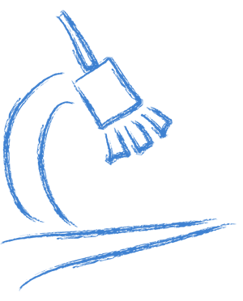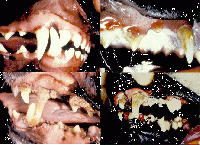|
|
| (3 intermediate revisions by the same user not shown) |
| Line 8: |
Line 8: |
| | | | |
| | </b></big> | | </b></big> |
| − | |logo = | + | |logo =path-logo.png |
| | }} | | }} |
| | | | |
| − | ==Introduction==
| |
| − |
| |
| − | See [[:Category:Teeth - Anatomy & Physiology|anatomy and physiology of the teeth]]
| |
| − |
| |
| − | ==Functional Anatomy==
| |
| − |
| |
| − | *The gingival crevice is an important site for disease processes in mouth to begin.
| |
| − |
| |
| − | *In ruminants and rodents [[Oral Cavity - Teeth & Gingiva - Anatomy & Physiology|teeth]] may fail to oppose properly or to allow side to side movement of jaws. This produces uneven wear (especially in horse). Sharp edges are produced on the outside of the [[Oral Cavity - Teeth & Gingiva - Anatomy & Physiology|teeth]] in the upper jaw and inside of the [[Oral Cavity - Teeth & Gingiva - Anatomy & Physiology|teeth]] in the lower jaw, which causes painful feeding and inanition (not eating).
| |
| − | **Approximately 75% of wasting horses have dental abnormalities.
| |
| − |
| |
| − | *This is not a problem in carnivores as do they not use [[Oral Cavity - Teeth & Gingiva - Anatomy & Physiology|teeth]] for [[Mastication|mastication]].
| |
| − |
| |
| − | *If a [[Oral Cavity - Teeth & Gingiva - Anatomy & Physiology|teeth]] is lost the opposing [[Oral Cavity - Teeth & Gingiva - Anatomy & Physiology|teeth]] may become very long and stop mouth closing properly.
| |
| − | **Seen mostly in rodents - [[Oral Cavity - Teeth & Gingiva - Anatomy & Physiology|teeth]] may even penetrate through [[Lips|lip]].
| |
| | | | |
| | + | [[File:Toothinfection.gif|200px]] |
| | | | |
| | | | |
| | [[Category:Oral_Cavity_and_Gingiva_-_Pathology]] | | [[Category:Oral_Cavity_and_Gingiva_-_Pathology]] |

